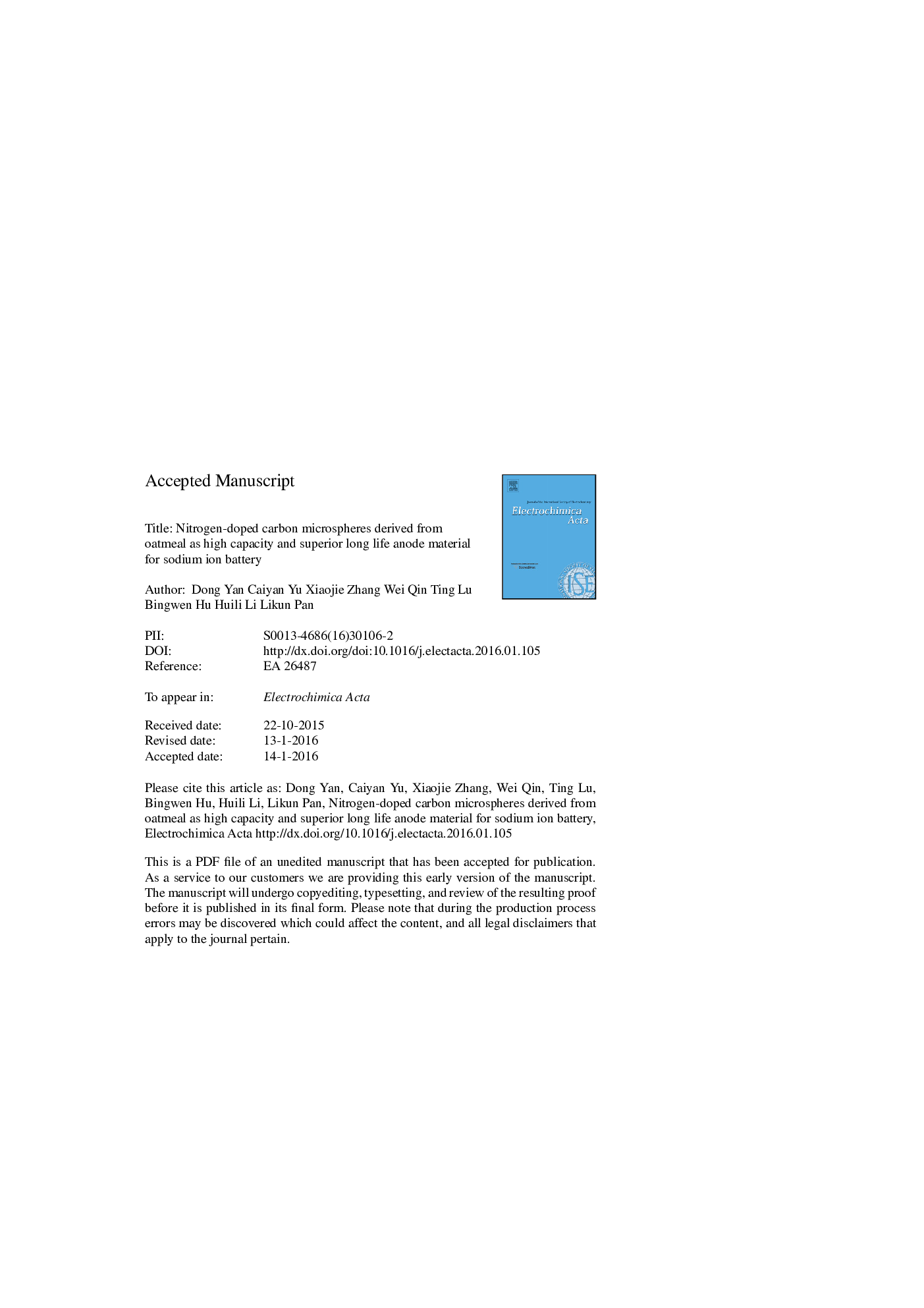| Article ID | Journal | Published Year | Pages | File Type |
|---|---|---|---|---|
| 6609104 | Electrochimica Acta | 2016 | 28 Pages |
Abstract
Nitrogen-doped carbon microspheres (NCSs) derived from oatmeal are employed as anodes for sodium ion batteries (SIBs). Their morphology, structure and electrochemical performance are characterized by field emission scanning electron microscopy, X-ray diffraction, Raman spectroscopy, X-ray photoelectron spectroscopy, nitrogen adsorption-desorption isotherms, galvanostatic charge/discharge tests, cyclic voltammetry and electrochemical impedance spectroscopy, respectively. The results show that NCSs treated at 500 °C exhibit a high maximum charge capacity of 336 mA h gâ1 after 50 cycles at a current density of 50 mA gâ1 and even at a high current density of 10 A gâ1 within 70 s charging time, a capacity of 104 mA h gâ1 is maintained after 12500 cycles without obvious decay. The high capacity, excellent rate performance, long life cycling and ultrafast rechargeable ability enable the NCSs to be a promising candidate for practical SIBs.
Keywords
Related Topics
Physical Sciences and Engineering
Chemical Engineering
Chemical Engineering (General)
Authors
Dong Yan, Caiyan Yu, Xiaojie Zhang, Wei Qin, Ting Lu, Bingwen Hu, Huili Li, Likun Pan,
